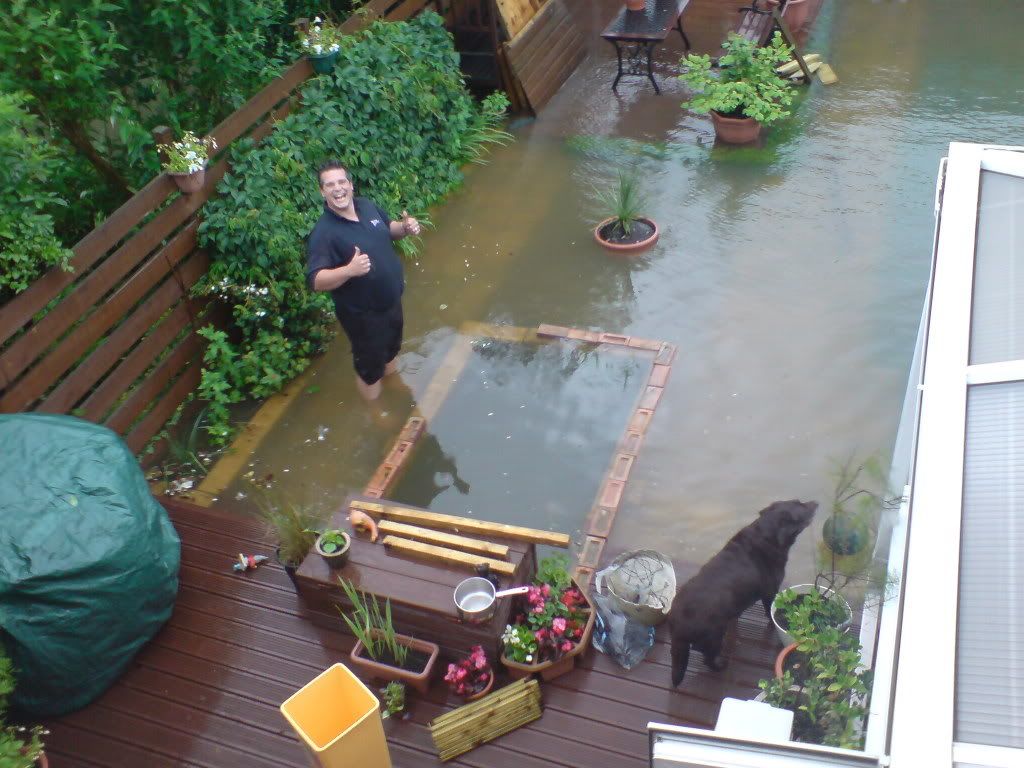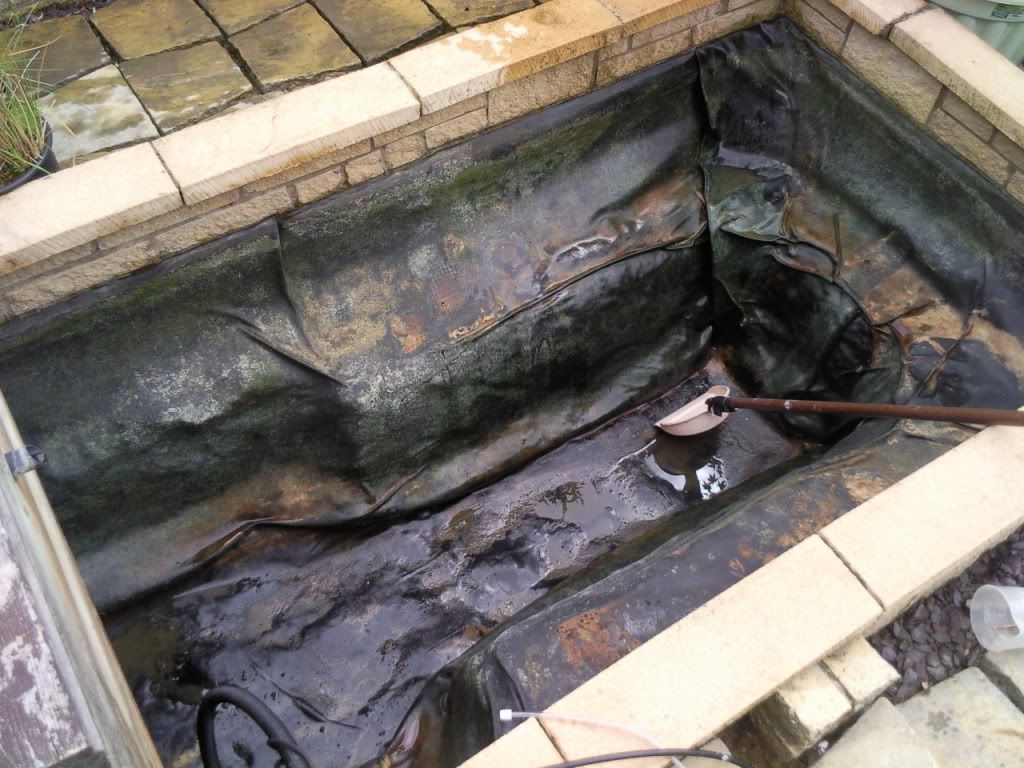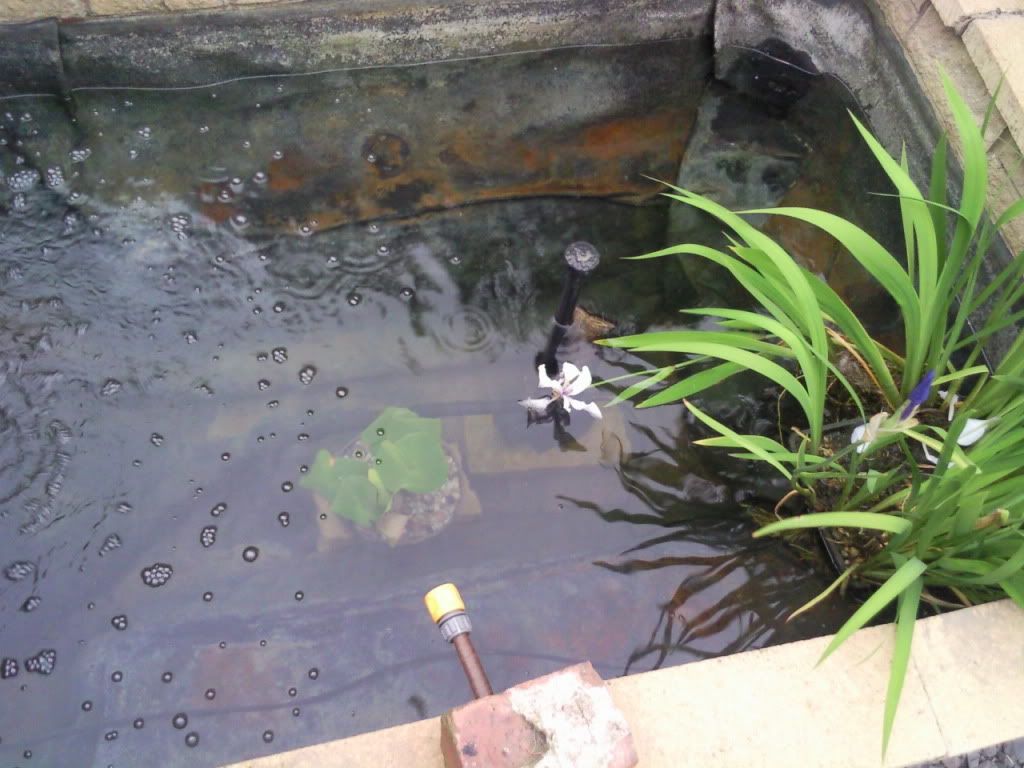I've built a few ponds in my time. The last one I build was for my dad at his house. It's 25,000 gallons so a bit of a whopper at 33' x 16' and 8' deep.
The stage you are at now where the water is nice and clear will not last for long unfortunately.
Basically you have cleaned the filter out, I assume you used tap water. The chlorine in tap water although it's only a small amount is there to kill off most of the bacteria so it's drinkable. However it will have the same effect on your filter killing all the good bacteria that was there to filter the water.
You need to get your nitrogen cycle working again. I’ve copied and pasted a post I put up on a Koi forum about 7 years ago for a perfect filter, although it may be out of date, the principle are the same and certain things like natures cycles never change.
-----------------------------------
1) Ammonia is produced by a) fish respiration, excretion and constant urinating. b) plants decomposing c) excess food (this is the biggest contributor).
In a basic koi pond there are not many plants, so the next steps are done by the process of our filters.
2) Within the first chamber we have brushes and/or nets. We need to get rid of some of these ammonia producing particles. So we have a mechanical filter. This will catch excretion and waste food and also parts of decomposing plants. At this stage Ammonia will still be present in the water. Please note that Ammonia is highly toxic to fish, even in small concentrations.
3) The next stage is the bio filter. This will consist of Flocor, Stinted glass, Japanese matting etc. the higher the surface area, the better. This filter must be covered to protect from sunlight. Within this filter and on the filter media live bacteria called Nitrosomonas. These bacteria are aerobic which means they require oxygen to survive. So it is essential that you provide these guys with as much Oxygen as possible via an airline (i.e air pump with air stone). They also need food, their favourite food is Ammonia. So, by eating Ammonia (NH3) and breathing Oxygen (O2), they excrete Nitrite (NO2).
Also within this filter chamber you will have bacteria called Nitrobacter. These guys are also aerobic so they also need a constant supply of oxygen. Unlike the Nitrosomonas, the Nitobacter eat Nitrite, they excrete Nitrates.
4) The next stage ideally should also be a bio chamber, again made from Flocor, Jap Matting, Stinted Glass etc. The more bio chambers you have in your filter the more likely that all the Ammonia and Nitrites will be minimal on exit of these chambers.
5) The next chamber should be a pump chamber or a vegetation chamber. We know now that the main element in this chamber will be Nitrates. So we need to get rid of these.
5a) If this is a pump chamber then this will consist of some sort of PH buffer material (in netted sacks) i.e. Coral chips, Oyster shells etc. and your pump(s). From here you have two options: a) You need to pump the water back to the pond via a waterfall that consist of plants. These plants use Nitrates as a form of fertiliser, and in return they supply that water with Oxygen. b) You need to pump this water back to the pond, but some of this water should be diverted via a trickle tower which will remove Nitrates from the water.
5b) If this is a vegetation chamber, unlike the other chambers, this should not be covered as most plants need sunlight to live. In here you need water plants that produce lots of leaves. The more leaves the better. I would recommend that at the exit of this chamber you have another row of brushes or netting, to stop large particles of debris feeding back into your pumps. This chamber will eat the Nitrates and produce oxygen. After this chamber you should have your pump chamber, see section 5a) for more info.
I hope this helps.




